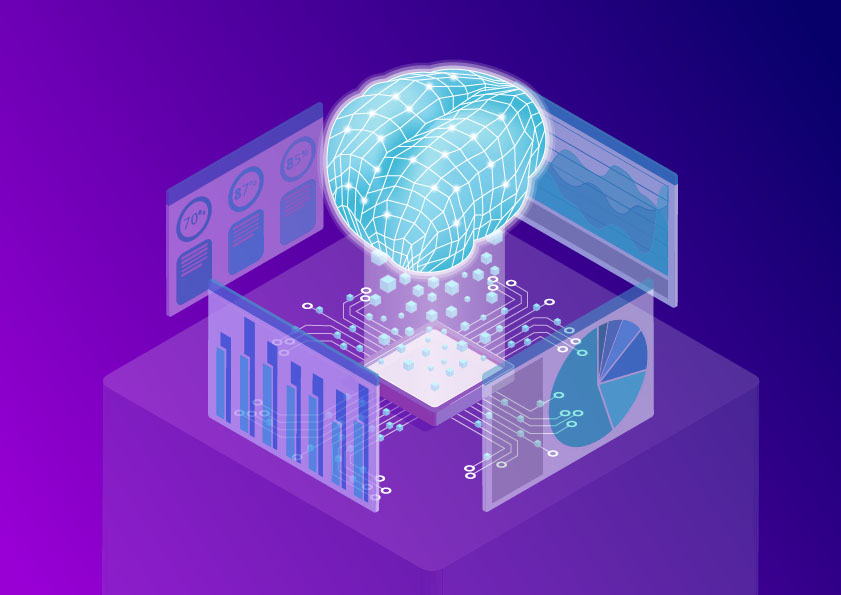
“Humans are obsessed with predicting the future – and we are absolutely horrible at it.”
– Troy Powell, PhD

Wouldn’t it be awesome if we had a crystal ball to look into the future and know what we need to do to be successful? Well, it’s not magic, but customer experience leaders do have some pretty cool tools to do some “fortune telling.”
What is predictive analytics?
The foundation of predictive analytics has been around since the late 2000s in the form of data mining. Now, Artificial Intelligence (AI), machine learning, and prescriptive analytics have taken over. At the root of it, all these topics are focused on the same thing: How do we make use of our abundance of data to understand either the future or what we don’t currently know about customers?
In CX, predictive analytics is the process of using data to help utilize current and historical information to estimate a probability that customers will either behave in a certain way or that they will hold a specific opinion about your company.
The value of predictive analytics
As we all know, only a small percentage of customers provide feedback through solicited sources like surveys. Mature CX organizations should be further supplementing survey feedback with customer emotions, effort and intent data from unstructured and unsolicited sources like social, chat, support calls, etc. But all these sources will still cover a minority of your customer base, so what are the majority of your customers thinking and feeling? We tend to think predictive analytics is always about the future, but a lot of times it’s about filling in missing data.
So, for the majority of customers who didn’t tell us what they think about their support experience or about the product, how can we use data about the minority we do hear from to project out to the majority? Where are the groups that we should get in touch with because they might have very negative perceptions about something? Thinking about it that way can be a big boon for a program and a way to provide extra value.
Profiling customers and projecting the missing data across them can also inform proactive business activities. For customer support, analyzing transaction surveys can help predict other customers who might have the same problem and then proactively go out to them. Also, iterating on interventions used with customers and their outcomes turns into a “next best action” model, where possible actions an agent could take with a customer are automatically considered and the one most likely to be successful is suggested to the agent.
Another popular application of predictive analytics is in cross-selling or promoting new products to existing customers. You have data on your customers that nobody can touch. By analyzing who has already bought the product, what those customers liked about it, and the value they found in the product, you can provide your sales and account management teams with a rank-ordered list of their customers based on propensities to purchase the product.
Certain behaviors can give clues as to how likely customers are to renew. For example, one company might find that decreased product use three months before renewal is an indicator that the customer is likely to leave. Alerts can be set up to warn when product usage drops off so account reps can follow up.
Listen to the expert!
Walker expert Troy Powell discusses the advantages of using predictive analysis on The CX Leader Podcast. Click play to listen:
As a CX professional, you can bring a huge information advantage to your sales leadership. Predictive analytics can help to make decisions faster, to make them more accurate, or to make them apply to more customers.
How can you get started with predictive analytics?
Start by thinking about what you want predictive analytics to do for you. What questions do you want it to answer? What decisions do you want to improve?
Ask department leaders: “If you could predict one thing about what the customer is going to do or think, what would that be?” And then dig deeper: What usually leads to positive or negative behavior for their customers? You can start by finding some big things that keep coming up and predicting sentiment with your customers. Zooming in on 10 or 20 metrics that lead to predictable behavior is a great start.
Continually have these discussions:
- Where are leaders being asked to make continual decisions over and over?
- How are those decisions managed?
- What systems are in place?
- Where are they not feeling great about that decision, not feeling as confident as maybe they would like to?
- What information are they missing that would help to make a decision?
- Where does data currently reside, and how can we get it?
Then you can work to create that data or create predictions.
To be able to make predictions, you need data. However, you don’t need ALL the data to get started. You don’t need access to every metric in your service cloud instance to predict whether somebody’s happy with a service event. Ask a small set of your best service employees for the internal metrics that drive service satisfaction. Then gather a dataset of those metrics for modeling. While you may miss a few contributing factors, in our experience, you will get a very useful model and won’t spend months trying to acquire a comprehensive dataset. In other words, don’t let analysis paralysis keep you from improving the experience!
Avoiding pitfalls
It’s important not to fall into the trap of thinking predictive analytics or AI is a kind of a push-button magic solution. Simply throwing data together and running an algorithm isn’t going to lay out a magical path to success. Analysis is only as good as the questions you ask, the data you have, and how your results will be used.
Also, don’t start with what you want the prediction to be! Let conclusions arise from the data.
When approached with discipline, predictive analytics is a great tool for anticipating customers’ needs and actions and taking your customer experience to the next level. You still may not have a crystal ball to see the future, but you might get a little closer.
